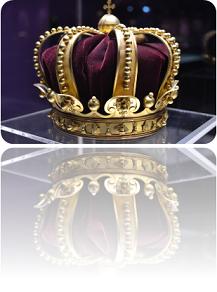Why Four Gospels?
Why Four Gospels?
Why are there four gospel books in the New Testament? Why do we not find one complete gospel covering all the events in the life of the Lord Jesus? Why four different writers, and four separate gospel accounts? I believe the best way to answer this question is to illustrate by example. If a person were to describe a certain mountain peak, and viewed this peak from its west side, he could describe it from this one perspective. His description could be detailed and beneficial. But, if he found another who could also view the same mountain peak from the north, a third who would study it from the south, and a fourth who observed it from the east, then he would have four different perspectives. With this more complete and well-rounded view, he could now describe this same mountain peak in a richer and more comprehensive manner.
This example helps to illustrate why we have four separate gospels in the Word of God. Each gospel account speaks about the same Lord Jesus Christ and His work, but each of the four has its own unique perspective. The following themes are stressed in each of the gospels:
Matthew – Christ as King
Mark – Jesus as Servant
Luke – Jesus as Son of Man
John – Christ as Son of God
These four themes are beautifully illustrated in the manner in which each gospel begins. When viewing the opening scenes of the Gospel of Matthew, we see the wise men arriving from the east bringing with them gifts of gold, frankincense, and myrrh. They enter Jerusalem and ask, "Where is He that is born, King of the Jews?" When they find Him, they bow before Him and give Him their kingly gifts. The Gospel of Matthew provides a very kingly entrance into the history of the Lord Jesus Christ.
How does the Gospel of Mark begin? When speaking about a servant, we are not interested in his lineage, nor in his birth; instead, we concentrate upon his work. Accordingly, the Gospel of Mark begins with Jesus' baptism, His temptation in the wilderness, and the calling of His disciples; it begins with His work.
The Gospel of Luke commences with the manger scene. There was no room for Jesus in the inn. Joseph and Mary were probably sent to that part of the inn where feed and shelter were provided for the animals of the travelers. There, in that lowly manger scene, surrounded by animals, in the midst of poverty, we observe the humble entrance of the Gospel of Luke illustrating its theme of Jesus as the Son of man.
The Gospel of John begins in eternity: "In the beginning was the Word, and the Word was with God, and the Word was God ... without Him was not anything made..." etc. It opens by speaking of Jesus Christ as divine, as the Son of God, for this is the theme of the Gospel of John.
 In the Gospel of Matthew, the word "King" may be found fifty times and the expression "the Kingdom of Heaven" is written thirty times. When reading the lineage of Jesus in Matthew and comparing it with the lineage in Luke, what difference can be observed? The lineage in Matthew speaks to the Jews of their King, of the Messiah who was to come. Consequently, Matthew's lineage begins with "The Book of the generation of Jesus Christ, the Son of David, the Son of Abraham." "The Son of David" is Jesus' kingly title, and "The Son of Abraham" refers to the Son of Promise. Matthew speaks of Christ as King.
In the Gospel of Matthew, the word "King" may be found fifty times and the expression "the Kingdom of Heaven" is written thirty times. When reading the lineage of Jesus in Matthew and comparing it with the lineage in Luke, what difference can be observed? The lineage in Matthew speaks to the Jews of their King, of the Messiah who was to come. Consequently, Matthew's lineage begins with "The Book of the generation of Jesus Christ, the Son of David, the Son of Abraham." "The Son of David" is Jesus' kingly title, and "The Son of Abraham" refers to the Son of Promise. Matthew speaks of Christ as King.
In the Gospel of Mark, the key words of "straightway" or "immediately" frequently appear. Mark is a book of action. There are no extensive teachings of the Lord Jesus to be found in it. Nineteen miracles are placed in the book of Mark, but only a few parables. It is a book of action; it centers upon His work as Servant.
In the Gospel of Luke, the feelings of the Lord Jesus Christ are described. It is in Luke that Jesus' weeping over Jerusalem and at the grave of Lazarus are found. The prayers of the Lord Jesus Christ are especially recorded in this gospel. When reading the lineage recorded in Luke, it is traced from the birth of Christ, not back to David or Abraham, but to Adam, for Luke concentrates upon Jesus as the Son of man.
Finally, in the Gospel of John, the spiritual teachings of Christ are emphasized. "Faith" and "eternal life" are key words in the Gospel of John for it portrays Christ as Divine, as the Son of God.
These four views, written from four different perspectives, give a comprehensive view of the person and work of the Lord Jesus Christ. How rich the Gospel message is as it centers upon Jesus Christ: the King of Kings, the Servant of His Father, the Son of man, and the eternal Son of God! What care the Lord has shown by providing us with this fourfold view of the life of Him upon whom the Word of God centers and a sinner's salvation depends! Have you been brought to know, love, and serve this Savior?

Add new comment